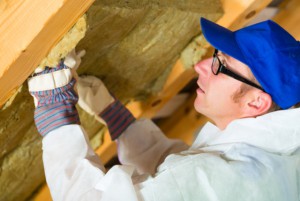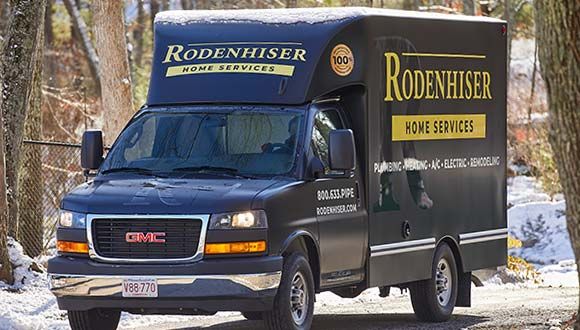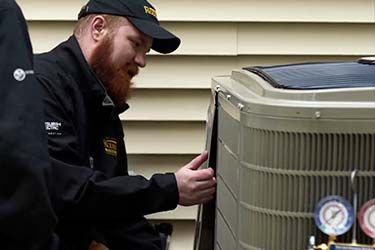



Avoid Attic Problems by Keeping Up With Insulation, Ventilation and Sealing
Although the attic is an easy space to overlook when it comes to the structural components of your home, energy bills and indoor comfort, attic problems can undermine each. It's worth spending a little time exploring ceilings and the attic to learn the integrity of this space and remedy any issues that exist.
 Insulation
Insulation
The U.S. Department of Energy recommends that homes have from 16 to 20 inches of batt or loose insulation to protect from year-round heat loss and gain. Insulation starts working immediately, can be a do-it-yourself project, and lasts for years. Proper insulation levels retards heat transfer, so without an adequate amount, heat will make its way into the attic, increasing your heating costs.
Ventilation
The temperature in the attic during the winter should closely match the outdoor temperature, and this is accomplished with ventilation. Inadequate ventilation will exacerbate moisture problems year-round, creating attic problems related to wood rot and mold growth.
The attic should have at least two vents for adequate passive air circulation. Assessing the amount of ventilation you have or need may require professional assistance, since it depends on the shape of the roof and attic size. The investment in adequate ventilation pays off in reduced maintenance costs.
Air Leaks
Air leaking into the attic from your home can lead to ice dams in the winter that are physically dangerous and destructive. How do these form? When warmed air rises through the air leaks, it warms the roof deck and melts the snow. As the water drains off the roof, it can start forming ice when it reaches the eaves. Once melted again, it can seep into the eaves and lower, eventually rotting wood and insulation.
Look for any areas where you have recessed lighting fixtures that protrude into the attic, kitchen and bathroom vent stacks, and the attic door or hatch. Sometimes chimneys and flues will have air leaks that need to be sealed with fire-safe caulk or flashing, as do recessed light fixtures.
The pros at Rodenhiser Plumbing, Heating & Air Conditioning can help you solve attic problems. We've provided top-notch services for homeowners in the Route 495/128 area of Massachusetts since 1928.
Image via Shutterstock.com
Nice people.
Great service.
Since 1928Terms & Conditions | Privacy Policy





Read From Over 14,000 Happy Customers
-
Both Alex and Patrick were knowledgeable, courteous, and professional. They made a change that might have solved the recent problem and have structured a more complete solution. We agreed to this...

-
Mike was thorough, thoughtful and considerate. Covered their shoes before entering, surveyed my issue and provided an explanation of the services and costs. Great Job!

-
Alex did a great job providing an explanation of the services provided and went out of his way to offer assistance/advice on other issues outside of our scheduled maintenance visit.

-
Brian did an excellent job inspecting our 18-year old boiler and replacing some of the accessory hardware that needed it, he also adjusted the outgoing hot water settings for our radiators and...

-
Rodenhiser is my one stop shop!!! They take care of my HVAC, electrical, and plumbing issues & are always helpful addressing any questions I may have about the systems in my house! Everyone...

-
Chris G. and Nick V. showed up bright and early at 8am to fix my water heater issue. They were on time, polite and were able to fix an issue that has been plaguing my house for a good year. They...

Call Rodenhiser at
1-800-462-9710
Call Rodenhiser at 1-800-462-9710
When you are looking for plumbing, electrical, heating or air conditioning in the Route 495 / 128 area, you will be delighted that you called Massachusetts' trusted choice since 1928.
With a total dedication to professional workmanship and excellent service, discover why families and businesses continue to trust Rodenhiser after generations of service

Trusted Plumbers
Fast, On Time
HVAC Experts
Satisfaction Guaranteed
Expert Electricians
Maintenance Plans
CONTACT RODENHISER TODAY
325 Hopping Brook Rd Holliston MA 01746.
-
Master Plumber: #10961
-
Corporate Plumbing: #2288
-
Master Electrician: #23917A
-
Electrical Business: #4804
-
Master Sheet Metal (Unrestricted): #5867
-
Corporate Sheet Metal: #641
-
Home Improvement Contractor: #188806
*Heating system check terms and conditions: Residential Only. Must reside within our service area. Offer only available to 1 unit per household additional units are at full price. Can not be combined with other offers
*Late Season Special Extra Conditions: Gas Systems only. No Discounts on oil systems. Promotional price limited to one system per home, additional systems will be charged at full price. Residential Systems only. Must reside within our service area. *For EV Charger Offer also: valid only when the system is purchased through Rodenhiser.
















